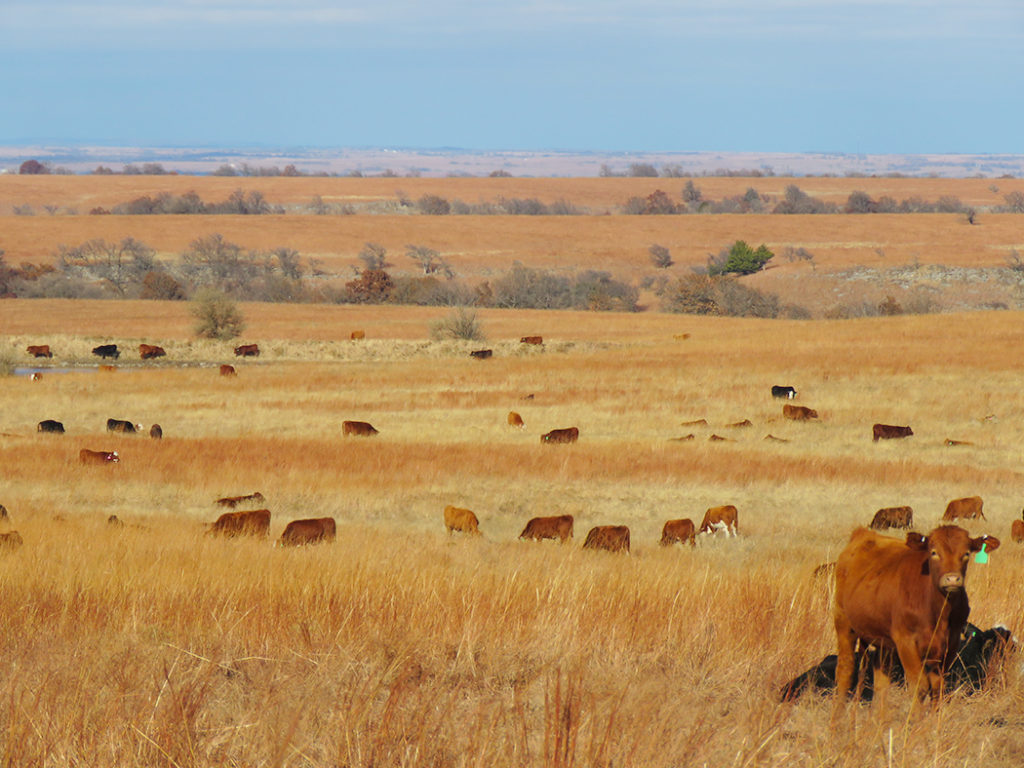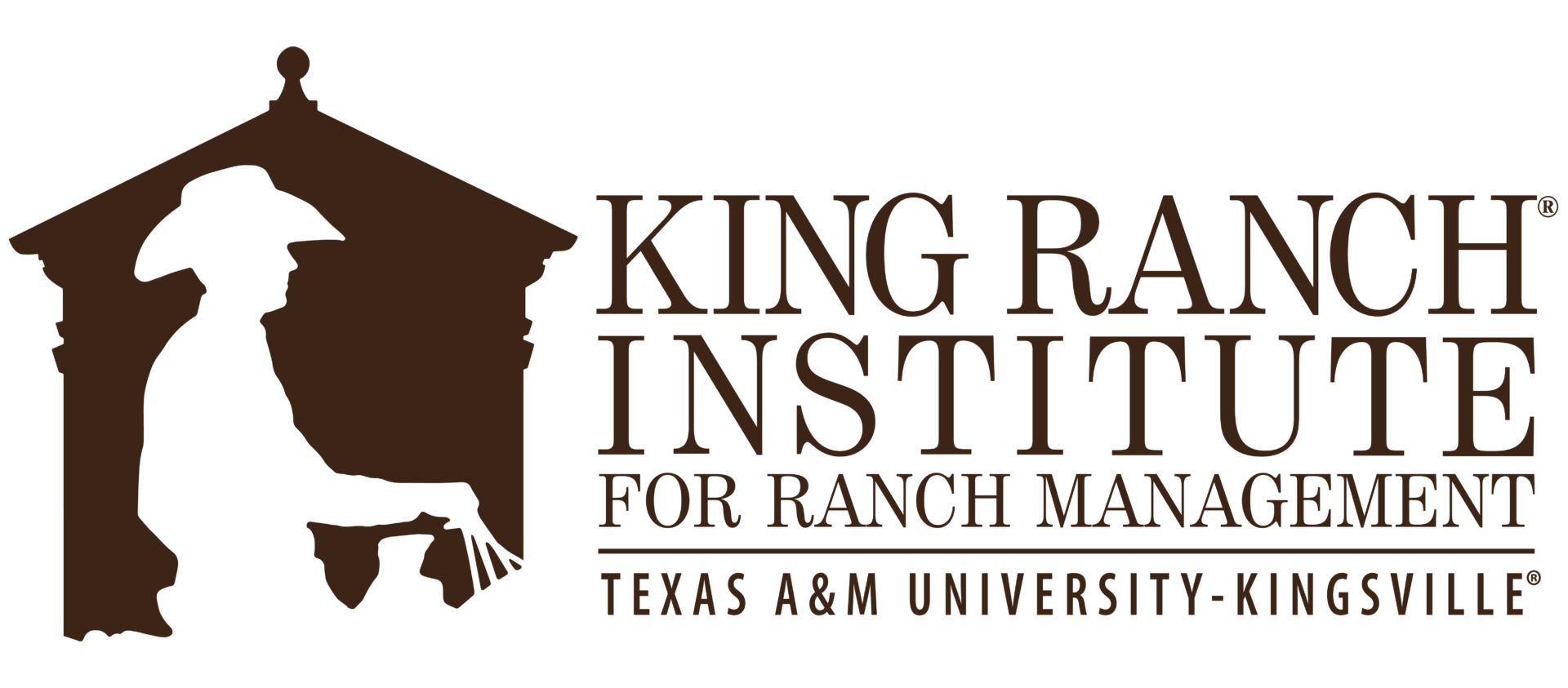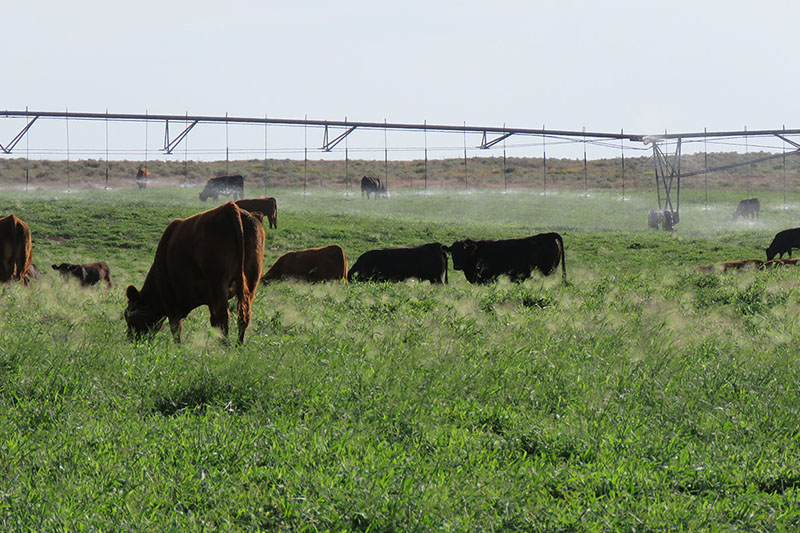By Jason Sawyer
Winter 2021 Newsletter
Enhancing the sustainability of ranching systems is a primary goal of the research, education, and outreach programs of the King Ranch® Institute for Ranch Management. From the perspective of an individual ranching business, sustainability might be viewed as the outcome of stewardship that creates economic viability through management of natural resources, personnel, and production efficiency so that the ranch can be passed to future generations. There are, however, external drivers in this system that affect how resources are managed (through regulatory actions, for example), how other members of the supply chain value ranch products, and ultimately, how much demand for beef consumers demonstrate through purchasing and consumption. One of these elements is the ‘social license to operate’; that is, the ‘acceptability’ of activities and practices used in a production system to societal expectations. Without this ‘license’, social pressures can be applied that ultimately reduce consumer demand and threaten the economic viability of the business; or regulatory actions may be taken that increase production costs or limit resource utilization. In these situations, it is important that there is a clear connection between society’s expectations about outcomes and the production system effects on these outcomes.
A clear example of this is the debate about livestock (especially beef cattle) contributions to climate change through greenhouse gas (GHG) emissions and their potential to affect global warming. We have all seen the commercial messages alluding to this relationship…but it is important to determine the viability of the implied cause and effect.
The ‘logic’ of the argument is usually presented in this way:
- Methane is a greenhouse gas
- It is more ‘potent’ as a GHG than carbon dioxide
- Greenhouse gas accumulation likely leads to warming, and increased global temperature
- Cattle produce methane as part of their ruminant digestive process
- Therefore, cattle cause global warming because they produce methane
If true, and if societal expectations are that such warming is an existential threat to humanity, then mitigating the threat is a reasonable response. However, it is important to consider first whether this logic is in fact valid, and secondly, if mitigation is likely to have the desired outcome, and at what cost. Addressing these questions is a key leverage point in the system of sustainable production.
Let’s evaluate the elements of the argument. First, it is important to recognize that society, generally, does consider ‘climate change’ to be an important issue. Given that reality, it is important to understand whether the conclusion that ‘beef causes global warming due to methane emissions’ is valid.

Relative importance of methane
First, methane is a greenhouse gas. For a gas to be labelled as a GHG simply means that it absorbs a portion of the solar radiation that is reflected from Earth back to space. This effect can be measured as the difference between the solar energy coming ‘in’ to the atmosphere compared to that ‘leaving’, and this difference is quantified as ‘radiative forcing’. Because of their molecular structure, some gases in the atmosphere absorb this reflected radiation, reducing the amount that leaves…and are labelled as GHG. The effects of changing the concentration of a GHG in the atmosphere are measured based on the ratio of the ‘new’ concentration of the GHG to the baseline concentration of the GHG. Because of this, if the baseline concertation is larger (like CO2), then a one-unit increase in the gas will have a relatively smaller effect… in the same way that adding a dollar to your bank account is a big deal if you started with only one dollar, but not very much of an effect if you already had $100,000.
Different GHG’s are often compared based on their forcing values. Because carbon dioxide (CO2) is the most abundant GHG that is released into the atmosphere, other gases are compared to it. If compared in this way, methane is viewed as more ‘potent’ than CO2, in part because of its molecular structure, and in part because it exists at a much lower concentration in the atmosphere…so adding one unit of methane has a greater proportional impact than adding one unit of CO2. While it is ‘true’ that methane is more ‘potent’, that may not mean it is more ‘important’ than CO2 in terms of its possible effects on warming. To evaluate that, we need to know how much of each gas is actually in the atmosphere. Most of the time, reports of GHG concentration are expressed units of volume. On this basis, CO2 is about 0.04 % of the atmosphere, and there is about 220 times more CO2 in the atmosphere than there is methane. But when ‘emissions’ of GHG are discussed, it is usually based on weight (kg). Because CO2 and methane don’t weigh the same per unit of volume, this changes the percentages a bit…on a weight basis, CO2 represents 0.06% of the atmosphere, and there is 598 times more CO2 than methane. Either way, although a single unit of methane may be more ‘potent’, CO2 is more ‘important’ than methane in terms of effects on warming, because there are so many more units of CO2.
Part of the reason for this difference is that CO2, once in the atmosphere, remains there until it is actively removed (for example, by a plant during photosynthesis). If the amount of CO2 being released each year exceeds the amount that can be removed, the CO2 concentration will go up. Even if CO2 release is reduced again until its emissions equal the ability of plants and other ‘sinks’ to remove it, the excess amount will remain in the atmosphere. Methane, on the other hand, breaks down in the atmosphere. Its lifetime is between 7 and 12 years, and averages about 9 years.
The differences in amounts, effects, and lifetime make it more difficult to compare the two gases, and can lead to misunderstanding of their relative impacts. As scientists have recognized this, they have attempted to develop methods to evaluate GHG effects, such as the 100-year global warming potential (GWP100), often used in GHG reporting systems. However, this metric can also be misinterpreted when used to evaluate effects at other than 100-year horizons. Newer methods of evaluating the effects of methane on warming (GWP*, for example) more effectively account for the short lifetime of methane in the atmosphere, and are likely better representations of its effects on warming.
Cattle as a methane source
Microbes in the rumen give cattle the ability to digest and utilize forages, and in the process of this microbial action methane is produced and eructated (belched). Methane production is about 3 % to 7 % of energy intake, with a great deal of variation around these values. Cattle fed more nutrient dense diets (such as in a feedlot) produce a lower percentage of methane relative to energy intake than those consuming lower quality forages. Because methane emissions represent a loss of energy in digestion, livestock operators may be interested in strategies that reduce its release, because they increase the efficiency of production.
All of the carbon in the methane released comes from the atmosphere – it is taken up by plants as CO2, and then eaten by cattle; some is converted to methane and released as part of the carbon cycle. The CO2 that is exhaled by cattle (and humans) has the same source, but is not considered a GHG emission. Arguably, carbon that is part of this short-term cycle is part of a zero-sum game, and no net ‘new’ carbon is being released; however, the current accounting of GHG emissions includes methane release from short-term cycle source, but not CO2. As above, the methane released in this manner is converted in the atmosphere over a relatively short time back into CO2, where it can be absorbed by plants and the cycle renewed.

When the relatively small daily production of methane per animal is multiplied by the number of days in the year and the total number of cattle in the US, the annual emissions seem like a large number. When accounting for the lifetime of methane and the growth in the US cattle population over the last 100 years, the increase in atmospheric methane that could be assigned to cattle is less than 1% of the amount in the atmosphere 100 years ago. This is within the range of uncertainty, and so the US cattle population (and its growth since 1920) have had a negligible, if any, effect on atmospheric methane concentration.
The logical conclusion
When considering the statements in the logic chain, they each appear to be true at face value. Methane is a GHG, and by many measures is more potent than CO2. Cattle do produce methane, as an outcome of being able to convert plant material inedible by humans into valuable products. But methane is not a more important driver of warming than CO2, and its production by cattle (when considering its atmospheric fate and short-term cycling of carbon) is very unlikely to be a material factor in climate change. So while the facts may be true, the conclusion is flawed, because of misunderstanding of the ‘missing’ information.
It is important to recognize that a leverage point for improving the sustainability of ranching systems is to develop and provide those missing pieces of information, and to enable policy makers and the consuming public to base decisions on the entirety of the facts to improve decision quality. This will sustain the demand for beef and encourage mitigation efforts for GHG in areas where they can be more effective, reducing regulatory burden. These drivers, while not under direct control of ranch managers, increase demand for beef and reduce the cost of production. Improving the understanding of the overall role of agriculture in sustaining humanity, and transparency in communicating about tradeoffs in production systems, are likely to improve consumer trust and social acceptability. Ultimately, these outcomes result in increased sustainability for the ranch.

